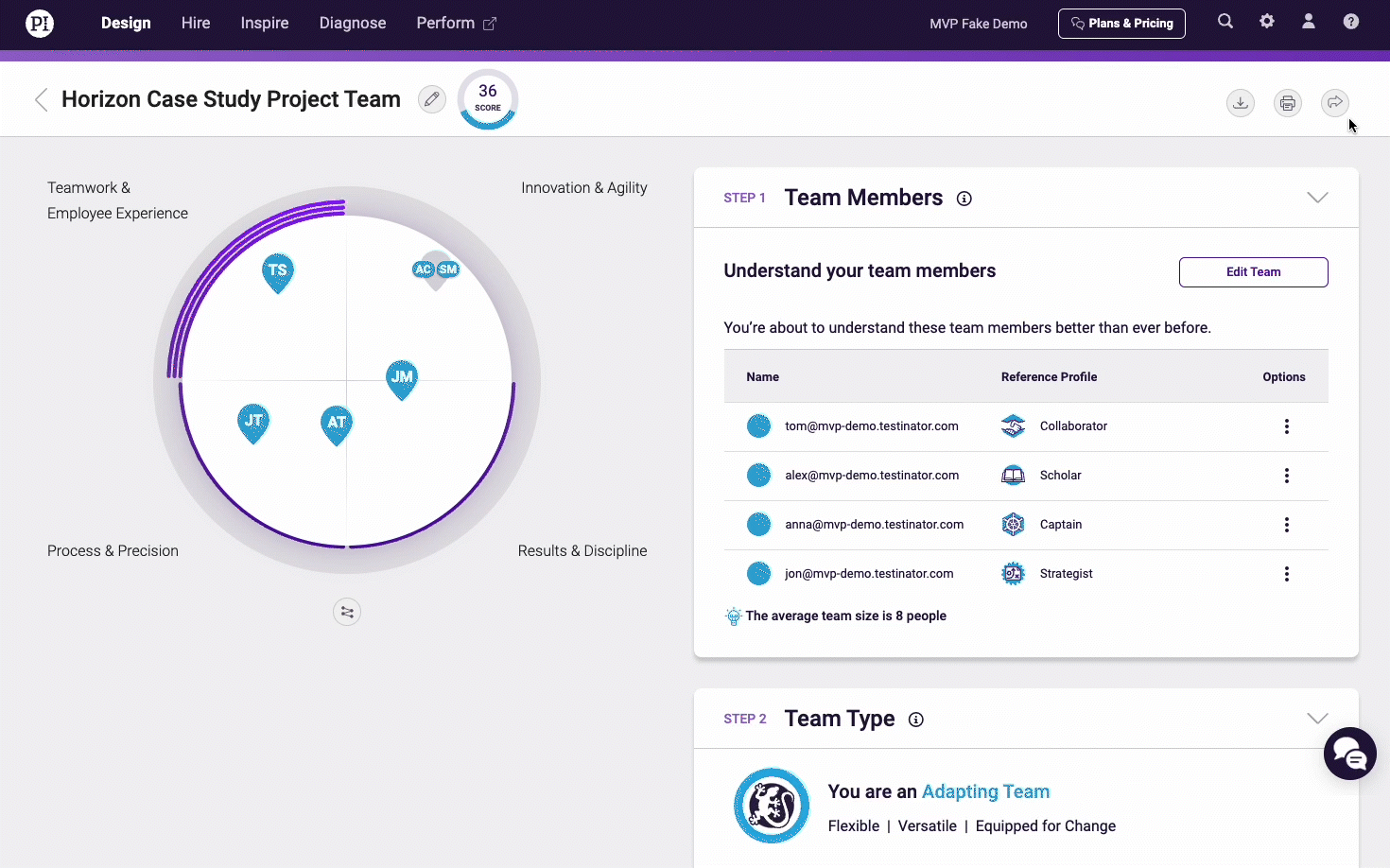When assessing team performance, it’s easy to fixate on results. Did this team hit these goals by these dates? While metrics are important, they don’t account for all drivers of success. And one of the most critical yet overlooked drivers is trust.
If your team is struggling to hit its goals, a lack of trust may be the root cause. When team members doubt one another, tensions can rise, communication tends to falter, and work slips through the cracks. This doesn’t exactly make for a conducive work environment.
In this blog, we’ll explore four different ways to build team trust:
- Establish team values.
- Foster open communication.
- Schedule regular meetings.
- Propose team-building activities.
Use the following know-how to address trust issues—and unlock high-performance teams.
Establish team values.
Every great organizational culture is built on certain values. When leadership can articulate what makes a model employee, it can then celebrate and reward these behaviors. Excellence will breed excellence, so to speak, and so the cycle goes.
It’s common to envision this at the company level, but any team can have its own culture. Just like how company culture helps build organizational trust, the right team culture will bolster confidence among teammates. So it’s important that you mold this culture with care.
Start by establishing values critical to team success. For example, our marketing team at PI uses a model created by Patrick Lencioni called the trust triangle. The pyramid has five levels: trust, conflict, commitment, accountability, and results. Only by embracing trust can we climb the triangle to achieve results.
Once you’ve decided on your values, find ways to encourage and reinforce them. In the case of our trust triangle, we use it to kick off each team meeting. This ensures we don’t lose sight of the importance of trust, or the values it helps us achieve.
Throughout this process, keep in mind that team trust is a team effort. Make an effort to include your employees in any brainstorming you do. By establishing values your whole team believes in, you create a culture in which everyone feels safe and empowered to contribute.

Foster open communication.
Another element of high-trust teams is openness. If team members feel they can’t speak candidly, they may withhold critical feedback. This can stifle collaboration and prevent the “tough love” needed to craft reliable products. Left unchecked, this can even impact employee engagement.
It’s important to reiterate the need for open communication to your team. Take time to explain the why behind the thinking—that honesty will make for a more effective team. From there, propose a plan of action that can help strengthen communication and build trust.
One of the first items on your to-do list should be to better understand your people’s communication needs. Some might prefer to share candid feedback face to face. Others might opt to provide their thoughts via email or Slack. As a practical example, if you have recurring meetings with a given group, try to vary the format, if possible. Pivot from an open discussion one week, to a Miro board the following, or a “come with two ideas” working session the following. This way, you’re catering to different preferences equally.
Our 2020 report, The Impact of Behavioral Drives in a Remote Workplace, can help you uncover these needs quickly. Discover actionable insights into your employees’ behavioral drives. That way, you can improve communication methods and lead more confidently.
By fostering an environment where employees feel empowered to tell the truth—even if it’s tough love—you can have healthy conflict sooner. This will help you address critical areas within the team, from leadership development to diversity and inclusion.
Join 10,000 companies solving the most complex people problems with PI.
Hire the right people, inspire their best work, design dream teams, and sustain engagement for the long haul.
Schedule regular meetings.
Team meetings are an important opportunity to align on goals and identify any roadblocks. But they’re also a way to build trust and goodwill. Especially when employees are working from home, regular team meetings provide essential facetime.
When leading virtual meetings, stay cognizant of your employees’ behavioral needs. If you have detail-oriented team members, try to provide an agenda and any decks in advance. For more macro-level employees, recap the meeting with the essential bullet points.
It’s also important to supplement these team meetings with individual check-ins. According to the 2019 People Management Report, the more frequent your 1 on 1s with direct reports, the stronger your relationships will be.
These meetings don’t always need to be formal. An impromptu coffee break between two team members—done via Zoom or Slack—can go a long way toward building trust and camaraderie. And this positivity can feed back into the team in meaningful ways.
Of course, it’s also important not to overdo it. Schedule too many team gatherings, and you can have the opposite effect on morale. So long as you avoid micromanaging your team, meetings can provide the energy needed to align your people and get the team moving.

Propose team-building activities.
High-performing teams are no strangers to hard work. But given all the effort your people put into their goals, make sure you’re paying it back and investing in their well-being, too.
Team-building activities are a fun way to alleviate stress and build trust among team members. While employees are remote, consider starting meetings with a short virtual icebreaker. From asking trivia questions to sharing weekend plans, there’s no shortage of ideas to run with.
You can also opt for longer, in-depth trust-building activities, too. In a pre-COVID world, company offsites allowed teams to align on goals and bond on a more personal level. These moments are still possible today, but will require the right ingenuity and technology.
There are even more examples of remote team-building activities you can try. At the end of the day, don’t get caught up on the logistics; the idea is just to bring your people together. If you’re having trouble coming up with activities, you can even ask team members to lead their own. For example, we celebrate life events as a team. If someone is expecting a baby or getting married, maybe it’s not “work-related.” But that’s a big deal to your team, so treat it like one!
Build trust when it matters most.
Don’t let a lack of confidence discourage your people. By following these tips, you can help foster a culture of transparency, honesty, and trust.
These ideals may not come about easily or quickly. But the sooner you take steps to identify areas of distrust, the sooner you can address them. And this will bring you that much closer to achieving your goals.








